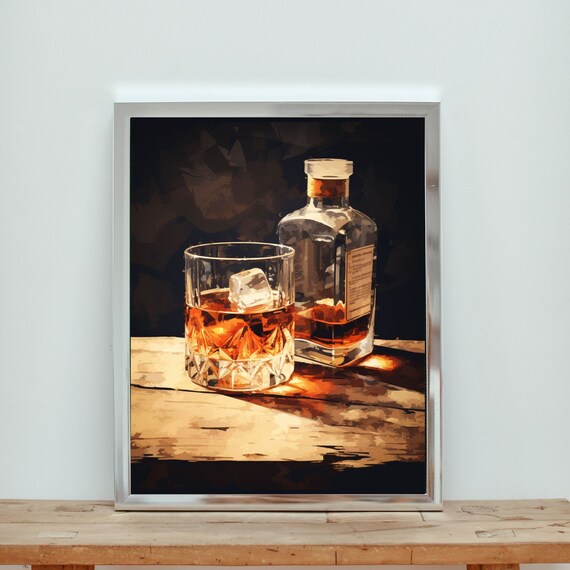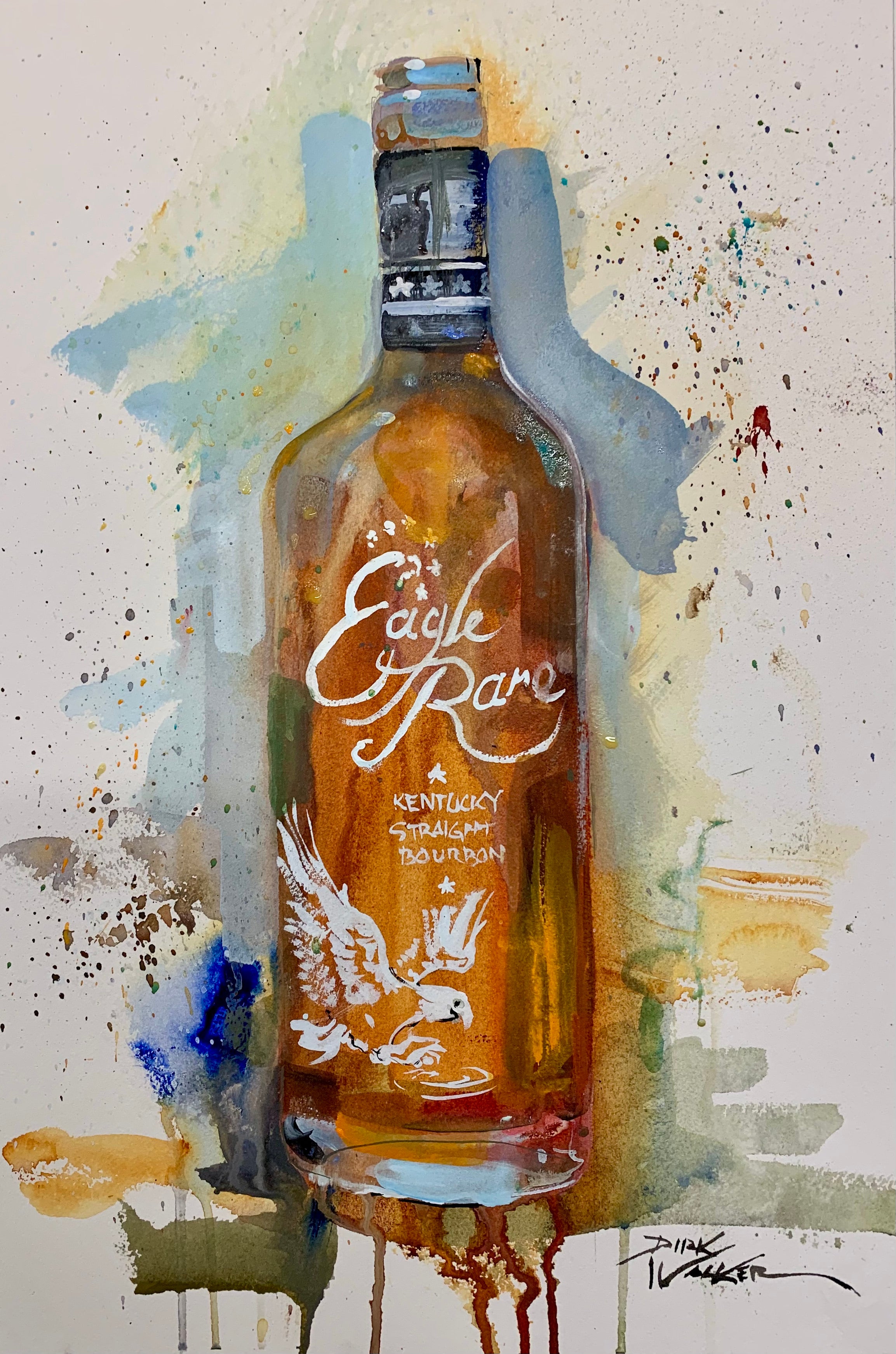Realism Art in the Whiskey Industry: Showing Moments of Purification
Realism Art in the Whiskey Industry: Showing Moments of Purification
Blog Article
The Value of Whiskey Art in Celebrating Heritage and Craftsmanship in the Beverage Sector
The detailed connection between scotch art and the celebration of heritage and workmanship within the drink sector can not be overemphasized. Via thoughtfully developed tags and containers, whiskey brand names encapsulate their historic origins and the artisanal skills that specify their manufacturing techniques.
The Historical Roots of Whiskey
At the heart of whiskey's allure lies a rich tapestry of historic origins that trace back to old civilizations. The beginnings of bourbon can be connected to the purification practices of the Sumerians and Babylonians around 2000 BCE, where very early kinds of fermented grain beverages began to arise. Nevertheless, it remained in the Center Ages that the art of purification developed considerably, specifically in Ireland and Scotland, bring about the development of scotch as we know it today.
The term "whiskey" itself obtains from the Gaelic word "uisce beatha," meaning "water of life." This expression emphasizes the cultural significance of scotch in Celtic societies, where it was typically connected with routines, events, and communal bonding. By the 15th century, purification came to be an acknowledged craft within monastic areas, paving the method for the establishment of legal distilleries.
As profession paths broadened, whiskey's popularity expanded, going beyond regional borders and recording the rate of interest of aficionados worldwide. Realism Art. This historical trip shows not just the craftsmanship behind whiskey production but likewise its important duty in cultural and social contexts, noting it as a significant beverage throughout history
Artistic Expression in Branding
Scotch branding stands as a compelling junction of virtuosity and commerce, where visual identity plays a critical role in shaping customer assumption. The appearances of scotch tags, product packaging, and marketing materials mirror not just the brand name's story but likewise its core values and heritage. Through imaginative expression, distilleries communicate a story that reverberates with consumers, evoking feelings and sparking connections.
The use of shade, typography, and images in branding offers to separate items in a saturated market. Traditional themes might evoke a feeling of credibility and craftsmanship, while contemporary styles can represent technology and forward-thinking. This tactical imaginative direction boosts brand name recognition and commitment, allowing consumers to create a personal partnership with the bourbon they choose.
Furthermore, imaginative expression in branding frequently functions as a celebration of local heritage. Distilleries often incorporate local icons or historic recommendations right into their layouts, developing a local color that welcomes consumers to take part in a broader social experience. Eventually, the creativity behind whiskey branding not just boosts aesthetic allure however likewise enriches the general narrative of the brand, fostering a deeper admiration for the workmanship and heritage ingrained in each bottle.
Craftsmanship in Bottle Style
The virtuosity apparent in whiskey branding expands beyond aesthetic identity to incorporate the workmanship associated with bottle layout. Each bottle serves as a vessel not just for the spirit within, yet also for the story it tells concerning its practice, high quality, and beginning. The design procedure needs careful focus to detail, as elements such as closure, form, and material add substantially to the general assumption of the bourbon.
Workmanship in bottle style entails selecting top notch glass that can boost the bourbon's shade and clearness, while likewise giving a tactile experience for the additional reading consumer. The silhouette of the container have to be both practical and aesthetically appealing, usually showing the heritage of the brand name. Lots of distilleries choose one-of-a-kind forms or printed logos that evoke a feeling of authenticity and background.
Furthermore, the tag style and typography play an essential role in connecting the brand name's story. Realism Art. A well-crafted container not only captivates the consumer's eye but also strengthens the brand's dedication to high quality and practice. In this method, the workmanship of bottle style becomes an essential facet of the scotch experience, merging creativity with an extensive regard for heritage
Social Importance of Whiskey Art
Commemorating tradition and craftsmanship, the cultural relevance of scotch art transcends plain looks, linking with the historical and social stories of the areas from which it stems. Each bottle acts as a canvas, showing the special tales, mythology, and practices that have actually formed local whiskey-making practices. The detailed styles usually mirror the heritage of the distillers, incorporating symbols and themes that reverberate with the society and worths of their neighborhoods.

On top of that, scotch art plays an important role in communal events and celebrations, functioning as a concrete web link between individuals and their shared experiences. By valuing the artistry in scotch product packaging, customers grow a deeper understanding and respect for the craft, eventually enhancing their enjoyment of the beverage itself.
Modern Trends in Scotch Discussion
In recent years, the discussion of scotch has actually evolved to show modern tastes and fads while still recognizing typical workmanship - Limited Edition. Distilleries are increasingly focusing on visual components that boost the total drinking experience, bridging the gap in between heritage and modernity
Ingenious container layouts have actually arised, often incorporating lasting products and creative labels that inform engaging stories. Numerous brand names currently team up with regional artists, infusing their products with special visual expressions that reverberate with customers. Additionally, limited-edition releases are frequently packaged in collectible containers, adding value and charm for connoisseurs.

Final Thought
Finally, whiskey art serves as an important channel for expressing the heritage and workmanship intrinsic in the beverage sector. Via detailed branding, ingenious container styles, and culturally significant creative components, scotch brands effectively honor their traditions and connect with customers. This imaginative narrative not just elevates the admiration of scotch however additionally strengthens neighborhood identification and satisfaction amongst manufacturers. Ultimately, scotch art plays an important role in preserving and commemorating the abundant social tapestry of whiskey-making.


Craftsmanship in bottle layout entails picking premium glass that can improve the scotch's shade and clarity, while also giving a tactile experience for the consumer. In this means, the craftsmanship of container style becomes a vital facet of the scotch experience, combining creativity with an extensive regard for heritage.
In conclusion, whiskey art offers as a crucial conduit for revealing the heritage and craftsmanship inherent in the drink industry.
Report this page